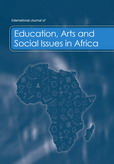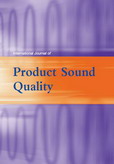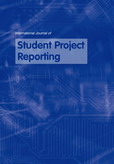Explore our journals
Browse journals by subject
Research picks
- Digital safeguarding – screen time, safe time
As digital devices become more integrated into children's lives, concerns about their impact on physical and mental health continue to grow. In modern households, smartphones, tablets, and computers are now commonplace, leading to increased exposure to online content. This shift has raised important questions about how much screen time is appropriate and what effects it has on children's well-being.
The issue of screen time has been widely debated, with research pointing to both potential risks and benefits. Excessive screen use has been linked to physical issues such as eye strain, headaches, and sleep disruption. There are also concerns about the relationship between increased screen time and physical inactivity, as children who spend more time on devices might be less engaged in outdoor play and exercise, both essential for their physical development.
On the other hand, the online world offers numerous opportunities for learning, creativity, and socialization. Educational apps, online learning platforms, and digital games can stimulate intellectual growth, promote critical thinking, and even foster social connections with peers across the globe. The challenge is finding a balance that maximizes the benefits of digital engagement while mitigating the potential negative effects on health and well-being.
Beyond physical health, the psychological effects of digital media are also a growing concern. Research indicates that extended use of devices, particularly those providing access to social media, can influence children's emotional well-being, intellectual development, and sense of identity. While some cases have linked excessive screen time to negative outcomes, the full psychological impact of digital media remains an area of ongoing research. It is important to also acknowledge the positive effects, such as improved cognitive skills and the opportunity for global social connections.
Given these concerns, researchers are exploring more personalized methods of regulating screen time, such as the use of fuzzy logic inference systems. These systems, a type of artificial intelligence, can evaluate complex and imprecise data, making them ideal for tailoring screen time recommendations and restrictions based on a child's unique characteristics.
Parents, guardians, or teachers could input data about a child's age, health, and psychological profile into the system, which would then use this information to determine appropriate screen time and content limits. Unlike generic restrictions, which may be difficult to enforce or inappropriate for all young users, fuzzy logic systems offer a more customized and flexible approach to managing screen use.
While there are existing tools that restrict screen time and block content, an adaptive approach, could be key to managing both the quantity and quality of screen time. Younger, more vulnerable users would have stricter controls and limits, while older, more mature children could access a wider range of appropriate resources, all based on their individual developmental profiles.
Alguliyev, R.M., Abdullayeva, F.J. and Ojagverdiyeva, S.S. (2024) 'Fuzzy expert system for access control of children to the internet', Int. J. Reasoning-based Intelligent Systems, Vol. 16, No. 6, pp.455–462.
DOI: 10.1504/IJRIS.2024.144062 - Urbanisation, musically speaking
Urban music, which originated in marginalized communities in The Caribbean and the USA, has found a global audience, resonating especially with young people, as is often the case with emerging music genres. Urban music has evolved into more than just a genre of entertainment, it has become a significant cultural force that shapes the identities, behaviour, and educational experiences of young people.
A study in the International Journal of Knowledge and Learning has examined the impact of urban music on secondary school students in Peru. The work sheds new light on its multifaceted role in adolescent life, which may well have wider implications. The findings suggest that urban music, encompassing styles such as hip-hop and reggaetón can serve as a platform for cultural expression and social belonging, influencing students in ways that are deeply linked to their socio-economic environments.
Agustin Angel Roberto Chumpitaz-Avila and Luis Fernando Castro-Llacsa of the National University of San Agustín of Arequipa in Arequipa, Peru, highlight how this musical genre has penetrated schools across Peru, including state, private, and religious institutions. This reflects the wide-reaching influence of urban music. While critics have long asserted that urban music might somehow promote antisocial behaviour, the research suggests that its influence on youth is not so easily categorized and indeed can have a strong positive influence.
Urban music does commonly have explicit lyrics that often feature violence, overtly sexual imagery, and drug use. Those social observers who malign it for these characteristics suggest that young listeners may internalize these messages. However, the current study found that while some students might adopt attitudes reflected in the music, the broader socio-economic and familial context plays a more significant role in determining their behaviour. Urban music, it seems, is a tool for young people to interpret their surroundings rather than an inherently harmful influence.
Chumpitaz-Avila, A.A.R. and Castro-Llacsa, L.F. (2025) 'Comparative analysis of the impact of urban music on students of state, private and parochial educational institutions', Int. J. Knowledge and Learning, Vol. 18, No. 2, pp.170–185.
DOI: 10.1504/IJKL.2025.145085 - Classical class – notes on automated music analysis
As digital music libraries continue to expand, the challenge of accurately categorizing musical genres remains high on the agenda. A study in the International Journal of Information and Communication Technology introduces a deep learning model designed to improve the classification of classical music genres.
By employing multi-channel learning (MCL) and Mel-spectrogram analysis, the model, known as MC-MelNet, offers what the research suggests is a more nuanced and efficient approach to genre identification. Tests carried out by its developer, Lei Zhang of the Henan Academy of Drama Arts at Henan University in Zhengzhou, China, show that it outperforms traditional classification methods.
The ability to classify music automatically has far-reaching implications for streaming services, music recommendation algorithms, and digital archiving. Classical music, with its intricate structures and subtle variations, presents a particular challenge for automated classification. Zhang explains that MC-MelNet addresses these issues by integrating multiple layers of analysis, capturing both the tonal and temporal characteristics of a composition.
At the core of MC-MelNet's innovation is its multi-channel learning framework, which processes multiple audio features simultaneously. Conventional approaches rely primarily on Mel-spectrograms, which break down an audio signal into different frequency components in a way that mimics human hearing. However, while effective in capturing tonal elements, Mel-spectrograms alone do not fully represent the temporal dynamics of music.
MC-MelNet overcomes this limitation by incorporating additional audio features such as Mel-frequency cepstral coefficients (MFCC) and Chroma features. MFCCs capture the timbral qualities of a sound, making them useful for distinguishing between different instruments or playing styles. Chroma features, on the other hand, focus on pitch content and harmonic structure. By combining these elements, MC-MelNet creates a richer and more detailed representation of musical compositions, allowing it to distinguish between closely related classical genres with greater accuracy.
Unlike conventional classification methods, which require manual feature extraction, MC-MelNet uses an end-to-end deep learning approach. It utilizes convolutional neural networks (CNNs) to detect spatial patterns in audio data and recurrent neural networks (RNNs), specifically long short-term memory (LSTM) networks, to process sequential musical information.
MC-MelNet might have applications beyond classical music classification. It could, for instance, be adapted for real-time sound processing and audio event detection. Enhancing the model's generalizability by training it on a more diverse dataset could make it applicable to a wider range of genres, improving automated music classification for commercial streaming platforms.
Zhang, L. (2025) 'Classification of classical music genres based on Mel-spectrogram and multi-channel learning', Int. J. Information and Communication Technology, Vol. 26, No. 5, pp.39–53.
DOI: 10.1504/IJICT.2025.145153 - Going spare roadside, cutting costs and emissions
A distribution model designed to streamline spare parts delivery to roadside assistance vehicles could cut costs in half, according to work in the International Journal of Shipping and Transport Logistics. The model builds a solution to the well-known Travelling Salesman Problem, a complex optimisation problem that involves finding the shortest route that visits each city once and ends at the starting point. The model was tested on real data from a roadside assistance company operating a fleet of service vehicles.
Abolfazl Shafaei, Mohammad Reza Akbari Jokar, and Majid Rafiee of Sharif University of Technology in Tehran, Iran, and Ahmad Hemmati of the University of Bergen in Bergen, Norway, explain that the major logistical challenge for roadside assistance fleets is balancing inventory space with repair capabilities. Service vehicles have limited space onboard, so they must prioritize particular spare parts and specific tools. Service vehicles usually visit a central warehouse on a regular schedule to restock on spare parts every few days. This adds to overall fuel costs, vehicle wear and tear, and lost servicing time. The new system replaces these frequent trips with a centralized delivery truck that optimizes the frequency and route of spare part deliveries.
However, drivers everywhere expect fast, efficient service from the company with which they entrust their vehicle's roadside maintenance, They also expect it to be inexpensive and a high-quality service.
The team tested several delivery schedules, including daily and every five days, and found that the most efficient option for this roadside assistance company was an optimized cycle on the first, second, and fourth days. This approach reduced costs by 56%.
The new model reduces the need to stockpile items by ensuring regular deliveries to the service fleet out on the road. This frees up space for repair equipment that allows for a wider variety of roadside fixes.
Beyond the immediate time and cost savings to companies running roadside assistance fleets, the model also promises significant environmental benefits. With fewer vehicles returning to a central warehouse to restock, fuel consumption and carbon emissions can be greatly reduced. Indeed, for the test case, the team found that annual carbon dioxide emissions could be reduced by 75 percent.
Shafaei, A., Akbari Jokar, M.R., Rafiee, M. and Hemmati, A. (2025) 'Using the route planning for supplying spare parts to reduce distribution costs: a case study in a roadside assistance company', Int. J. Shipping and Transport Logistics, Vol. 20, No. 1, pp.131-158.
DOI: 10.1504/IJSTL.2025.144995 - Robots get a grip on objects with a twist
Recent work in 6D object pose estimation holds significant promise for advancing robotics, augmented reality (AR), virtual reality (VR), as well as autonomous navigation. The research, published in the International Journal of Computational Science and Engineering, introduces a method that enhances the accuracy, generalization, and efficiency of determining an object's rotation and translation from a single image. This could significantly improve robots' ability to interact with objects, especially in dynamic or obstructed environments.
In robotics, 6D object pose estimation refers to determining both the orientation (rotation) and position (translation) of an object in three-dimensional space. "6D" describes six degrees of freedom: three for translation (X, Y, Z axes) and three for rotation (around those axes). Accurate pose estimation is critical for autonomous systems, including robots and AR/VR systems.
Challenges arise due to variations in object shapes, viewpoints, and computational demands. Current methods rely on deep-learning techniques using large datasets of objects viewed from various angles. These models struggle with unseen objects or those with shapes different from training data.
The new technique discussed by Zhizhong Chen, Zhihang Wang, Xue Hui Xing, and Tao Kuai of the Northwest Institute of Mechanical and Electrical Engineering in Xianyang City, China, addresses the various challenges by incorporating rotation-invariant features into an artificial intelligence system known as a 3D convolutional network. This allows the system to process an object's 3D point cloud, regardless of its orientation, leading to more accurate pose predictions even when the object is rotated or seen from unfamiliar angles. The network uses a consistent set of coordinates, known as canonical coordinates, which represent the object in a frame of reference unaffected by rotation. This innovation improves the system's ability to generalize to new poses, overcoming a limitation of conventional methods.
Not only is the new approach more accurate, it is more efficient and so needs less training data and less computer power, making it more suited for real-time, real-world applications.
Chen, Z., Wang, Z., Xing, X.H. and Kuai, T. (2025) 'Rotation-invariant 3D convolutional neural networks for 6D object pose estimation', Int. J. Computational Science and Engineering, Vol. 28, No. 8, pp.1–9.
DOI: 10.1504/IJCSE.2025.145133 - Hitting the right notes in vocal separation
Separating the human voice from the music in an audio recording has long been a challenge in signal processing. There are numerous so-called artificial intelligence (AI) tools around that can do this now with varying degrees of accuracy. The task is difficult due to the complexity of music, which involves multiple overlapping sources across the audible frequency spectrum. There is a need to increase the resolution and clarity of systems that can separate a vocal from the instrumental for a wide range of applications, such as post-production remixes of music, singing instruction and rehearsing.
A new method is reported in the International Journal of Reasoning-based Intelligent Systems. The researchers, Maoyuan Yin and Li Pan of the School of Music and Dance at Mudanjiang Normal University in Mudanjiang, China, have, they say, improved upon existing techniques by combining several advanced signal processing techniques. Their starting point is the use of a virtual microphone array. This virtual setup helps them localize the human voice within the overall sound and isolate it from the background.
The virtual microphone array creates a spatial representation of the sound, the team explains. To further improve on the results, the team also used near-field and far-field models to simulate the propagation of sound from sources at different distances. This gives them even more precision in localising the vocal within the sound.
Once the voice is accurately located, the system constructs a time-frequency spectrum for both the human voice and the background music. The time-frequency spectrum tracks how the energy of sound signals shifts along the frequency axis over time. The system can then analyse these changes and distinguish between vocal and instrumental, isolating them from one another.
The process is further refined by the use of a sophisticated algorithmic technique – the Hamming window function, which improves the efficiency of the requisite two-dimensional fast Fourier transform (2DFT) processing of the data. This step reduces the number of dimensions of the various extracted sound signals, simplifying the final extraction of vocal from music.
Test results demonstrate the effectiveness of this new approach with a localization error of just 0.50%. For background music, the feature extraction error is reduced to 0.05%. Overall, the team could reach almost 99 percent accuracy in separating vocal from instrumental. The same approach should also work in isolating a human voice from non-musical background noise. It could thus be used to improve automated spoken-word transcription services and help in the development of better hearing aids.
Yin, M. and Pan, L. (2025) 'Separating voice and background music based on 2DFT transform', Int. J. Reasoning-based Intelligent Systems, Vol. 17, No. 1, pp.50–57.
DOI: 10.1504/IJRIS.2025.145050 - Art for maths' sake
Fractals are intricate geometric shapes that exhibit self-similarity, meaning their patterns repeat at different scales, no matter how much they are magnified. Unlike traditional geometric figures such as circles or squares, which can be described with simple equations, fractals are generated through iterative mathematical processes, producing infinitely complex and detailed structures.
We see fractals all around us, in the branching structure of a tree, in clouds, snowflakes, coastlines, in the system of blood vessels and nerves in our bodies. Fractals can thus be used as a scientific model for many natural phenomena, However, their inherent beauty and intrigue can be a source of artistic inspiration too.
A study in the International Journal of Information and Communication Technology introduces an advanced approach that can be used to create novel images based on fractals. The optimisation algorithm, developed by Junli Wang of the School of Digital Arts at Wuxi Vocational College of Science and Technology in Wuxi, China, and known as the Equilibrium Optimiser (EO), significantly improving efficiency and design diversity.
Fractal geometry was first formalised by Benoît Mandelbrot in the 1970s and has influenced fields ranging from architecture to computer graphics and even music composition. The challenge in fractal art generation has traditionally been the reliance on manual input, requiring expertise and time-consuming adjustments. The new research overcomes some of those limitations through the EO algorithm, which enables a more efficient, diverse, and aesthetically rich exploration of fractal forms, according to the study.
The EO algorithm is an advanced optimisation algorithm based on how natural physical systems balance themselves. Unlike Genetic Algorithms (GA) and Particle Swarm Optimisation (PSO), the EO algorithm adjusts its search strategies dynamically to avoid becoming trapped in local optimisation points, a common problem of many mathematical models. This means that the EO algorithm can fine-tune the parameters needed to generate fractal patterns, producing designs with greater symmetry, complexity, and structural variation than traditional approaches. Wang's tests show that the EO algorithm works better than older algorithms in terms of the speed with which it converges on a solution and the visual quality and stability it produces.
Beyond its technical contributions, this research raises important questions about the intersection of technology and art. The ability to generate intricate fractal patterns automatically expands the creative possibilities available to artists, designers, and researchers. Unlike hand-drawn or physically painted works, digital fractal art is created through computation, challenging conventional ideas of authorship and artistic intent.
Wang, J. (2025) 'An alternative method for generating fractal art patterns based on the balanced optimiser algorithm', Int. J. Information and Communication Technology, Vol. 26, No. 5, pp.54–68.
DOI: 10.1504/IJICT.2025.145150 - Can one buy the greatest gift?
Can money buy happiness? An age-old question with as yet no definitive answer. The ancient philosophers could not find it, nor can modern economists with their spreadsheets and algorithms. A study in the International Journal of Happiness and Development has explored the complex relationship between income and happiness and provides some new insights into the debate.
Ling Zhang China Agricultural University in Beijing, China, and Sajal Lahiri of Southern Illinois University Carbondale in Carbondale, Illinois, USA, used data from the Panel Study of Income Dynamics, a comprehensive dataset that tracks individuals over time, and found that having a higher income does seem to correlate with increased life satisfaction. Importantly, the data is longitudinal, which means it tracks the same individuals over several years, allowing the researchers to control for unchanging factors such as personality traits or family background.
The study also found that for those with rising income, their happiness tends to rise too. Conventionally, the Easterlin Paradox has suggested that although wealthier people are generally happier at any given time, happiness does not necessarily increase as individuals become wealthier over their lifetime. This new research somewhat overturns that notion.
Of course, there are always exceptions to any rule, poorer people with seemingly plenty to smile about, who accept their lot and enjoy life regardless and conversely the super-rich individual who never smiles and seems perpetually burdened by their wealth.
The study used subjective well-being (SWB) scales, where individuals rate their life satisfaction on a scale from 1 to 10 to measure happiness. The results were telling: income was positively linked to life satisfaction, and the effect of income on happiness has become more pronounced in recent years. The study also showed that individuals whose income decreased in real terms, often because of factors such as technological progress or globalization, reported lower levels of life satisfaction. This suggests that declines in income, particularly among lower-income individuals, can negatively affect well-being.
While the relationship between money and happiness remains a nuanced topic, the evidence from this study adds weight to the argument that economic well-being plays a significant role in determining overall life satisfaction. These findings emphasise the importance of addressing income inequality and supporting policies that help individuals increase their earnings. As the study suggests, fostering economic fairness and opportunity may not only help individuals thrive, but could also enhance collective happiness.
Zhang, L. and Lahiri, S. (2025) 'Income and happiness: a study of a panel of US residents', Int. J. Happiness and Development, Vol. 9, No. 1, pp.1–14.
DOI: 10.1504/IJHD.2025.144959 - The real thing
Artificial intelligence (AI) and deep-learning technologies have led to the development of so-called deepfakes. These are generated or manipulated video or audio recordings that can alter a person's facial expressions, voice, or even their entire identity. While deepfakes have some legitimate uses in areas such as entertainment and art, their potential for misuse and for the spread of misinformation or damaging reputations has been recognised for several years. As the technology used to create deepfakes becomes more sophisticated, so there is a growing need to develop methods for deepfake detection.
Research described in the International Journal of Computational Science and Engineering introduces a hybrid deep-learning model that can itself improve the detection of deepfake content. The model combines two convolutional neural network (CNN) architectures, Inception ResNetV2 and Xception, along with long short-term memory (LSTM) networks. LSTM networks can process sequential data from video or audio segments and are particularly useful in spotting inconsistencies in manipulated media.
Shourya Chambial, Tanisha Pandey, Rishabh Budhia, and Balakrushna Tripathy of the Vellore Institute of Technology in Tamil Nadu, India, and Anurag Tripathy of Carnegie Mellon University in Pittsburgh, Pennsylvania, USA, trained their deepfake detector on a large dataset containing both real and manipulated video data. They were able to achieve an accuracy of almost 97 percent in tests. This suggests that the hybrid approach is capable of identifying subtle signs of manipulation in digital media and so decide whether a video is real or fake.
An important aspect of the research is that it emphasizes the importance of fine-tuning deep-learning models so that they work well with real-world data. An issue that commonly arises with certain types of AI model is that of "overfitting", where the algorithm is too closely tied to the specific characteristics of its training data and struggles to perform on new, unseen data. In the current work, the team monitored performance and adjusted it to ensure it remained effective with a wide range of video content.
Chambial, S., Pandey, T., Budhia, R., Tripathy, B. and Tripathy, A. (2025) 'Unlocking the potential of deepfake generation and detection with a hybrid approach', Int. J. Computational Science and Engineering, Vol. 28, No. 2, pp.151–165.
DOI: 10.1504/IJCSE.2025.144802 - Track and trace for those ten green bottles
Better technology for keeping track of glass beer bottles could be important in improving health and safety and operational efficiency in the alcoholic beverage sector, according to work published in the International Journal of Productivity and Quality Management.
A team in Brazil has evaluated three technologies, laser, carbon dioxide laser, and QR code systems and considered basic criteria such as security, cost, performance, and social impact. Carolina Xavier da Silva Seixas Rocha, Aldara da Silva César, and Cecilia Toledo Hernández, and Ualison Rébula de Oliveira of the Fluminense Federal University in Volta Redonda, and Fabiane Letícia Lizarelli of the Universidade Federal de São Carlos in São Carlos, Brazil, suggest that QR code technology offers the best balance between the various factors, particularly in terms of safety and broader social implications.
Traceability is the ability to track products through the supply chain and has become a critical issue in the food industry due to the increasing frequency of health problems associated with foodborne pathogens. According to the World Health Organization, millions of people are affected by foodborne illnesses each year, underlining the importance of systems that can trace the origin and movement of food products. Effective traceability can help quickly identify and remove products that pose a safety risk, which is vital for consumer protection.
The team focus on Brazil, where beer consumption is on the rise, and highlight the need for improved traceability in the beer industry. The team has identified how Brazilian glass bottle manufacturers lacking the ability to trace individual bottles. This limitation inevitably complicates the resolution of customer complaints and the identification of production issues.
While there are sophisticated methods for analysing a given bottle, the team suggests that the two-dimensional bar code system, known as the QR (Quick-response) code, offers a promising solution to traceability. QR codes are relatively inexpensive to implement, easy to use, and capable of providing real-time data on product movements. These features make them a strong choice for companies looking to meet both safety requirements and consumer demand for transparency. Additionally, QR codes align with increasing regulatory pressures in markets like Brazil, where food safety standards are becoming more stringent.
Rocha, C.X.d.S.S., César, A.d.S., Hernández, C.T., de Oliveira, U.R. and Lizarelli, F.L. (2025) 'Analysis and selection of glass bottle traceability technologies in the beer production chain', Int. J. Productivity and Quality Management, Vol. 44, No. 2, pp.178–204.
DOI: 10.1504/IJPQM.2025.144340
News
International Journal of Power and Energy Conversion is now an open access-only journal
We are pleased to announce that the International Journal of Power and Energy Conversion is now an Open Access-only journal. All accepted articles submitted from 18 March 2025 onwards will be Open Access, and will require an article processing charge of US $1600.
Prof. Varun Gupta appointed as new Editor in Chief of International Journal of Computer Aided Engineering and Technology
Prof. Varun Gupta from Gisma University of Applied Sciences's Multidisciplinary Research Centre for Innovations in SMEs in Germany has been appointed to take over editorship of the International Journal of Computer Aided Engineering and Technology.
International Journal of Internet Technology and Secured Transactions is now an open access-only journal
We are pleased to announce that the International Journal of Internet Technology and Secured Transactions is now an Open Access-only journal. All accepted articles submitted from 12 March 2025 onwards will be Open Access, and will require an article processing charge of US $1600.
Prof. Yuanquan Shi appointed as new Editor in Chief of International Journal of Internet Technology and Secured Transactions
Prof. Yuanquan Shi from Hunan First Normal University in China has been appointed to take over editorship of the International Journal of Internet Technology and Secured Transactions.
Prof. Amir Hasnaoui appointed as new Editor in Chief of International Journal of Management and Network Economics
Prof. Amir Hasnaoui from Excelia Business School in France has been appointed to take over editorship of the International Journal of Management and Network Economics.




